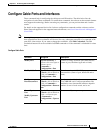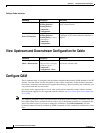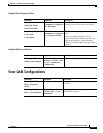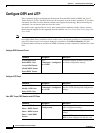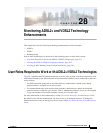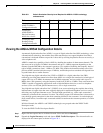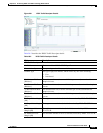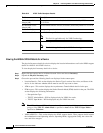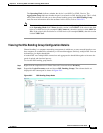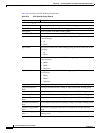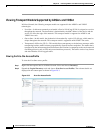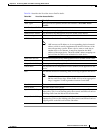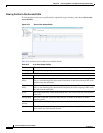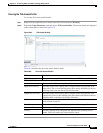
28-5
Cisco Prime Network 4.0 User Guide
OL-29343-01
Chapter 28 Monitoring ADSL2+ and VDSL2 Technology Enhancements
User Roles Required to Work with ADSL2+/VDSL2 Technologies
The Operating Mode indicates whether the device is an ADSL2 or VDSL 2 device. The
Aggregation Group indicates whether the port is associated to a DSL bonding group. This is a link,
which when clicked will take you to the relevant bonding group in the DSL Bonding Group
node.For more information about the attributes in this section, refer to Table 28-2.
Note The name of this section changes based on the value in the Operating Mode field. If the value
in the Operating Mode field is None, then this section is titled XDSL. If the value in this field
refers to a ADSL device (for example G.992.5 Annex A), then this section is titled ADSL Ver
2/2+. If the value in this field refers to a VDSL device (for example G.993.2), then this section
is titled VDSL Ver2.
Viewing the DSL Bonding Group Configuration Details
Channel bonding is a computer networking arrangement in which two or more network interfaces on a
host computer are combined for redundancy or increased throughput. Similarly, multiple DSL lines can
be bonded to give higher bandwidth.
A bonded DSL uses multiple DSL connections and aggregates the bandwidth together to increase the
speed of upload and download process.
To view the DSL bonding group details:
Step 1 Right-click the required device in Prime Network Vision and choose Inventory.
Step 2 Expand the Logical Inventory node and choose DSL Bonding Groups. The relevant details are
displayed in the content pane as shown in Figure 28-2.
Figure 28-2 DSL Bonding Group Node



